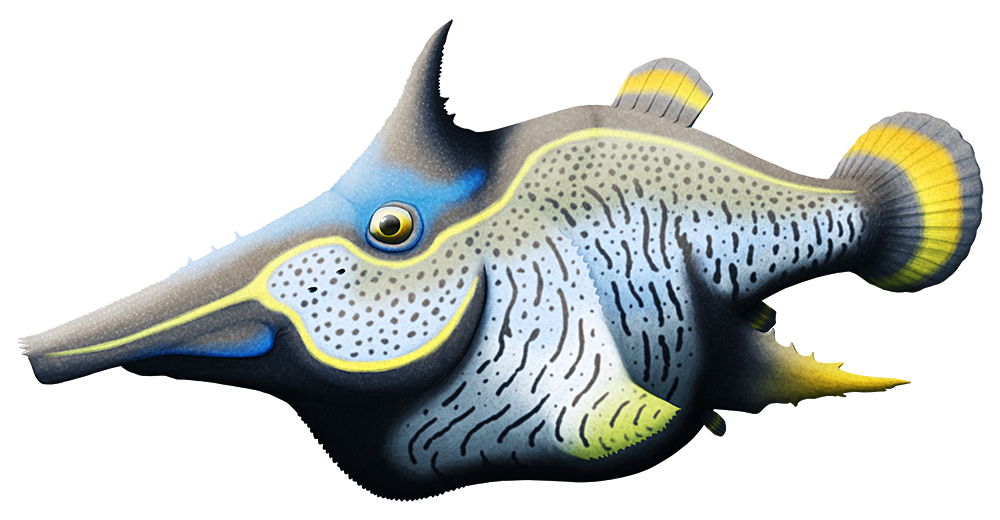The extinct pycnodonts were a group of mostly circular-shaped fish, convergently similar to modern reef fish like marine angelfish or butterflyfish – but some of them developed much much weirder appearances.
Rostropycnodus gayeti here was one of the especially odd-looking forms, known from the mid-Cretaceous of Lebanon about 100-95 million years ago.
It had an elongated snout with the upper jaw longer than the lower, a pointed spiky horn on its forehead, and a massive pectoral region that bulged out at the front of its body. Meanwhile its pectoral fins were modified into big immobile spines, and its pelvic fins were highly reduced and positioned beneath another set of large spines.
And it was tiny, only about 5.5cm long ~(2″).
It would have been a slow swimmer, relying on its spikiness to deter larger predators, and it’s currently unclear what it ate with its unusual spiny snout. Many other pycnodonts had mouths full of round crushing teeth, but Rostropycnodus’ jaws seem to have been mostly toothless – so perhaps it used its snout to probe around in cracks or sediment for small soft-bodied invertebrates.

